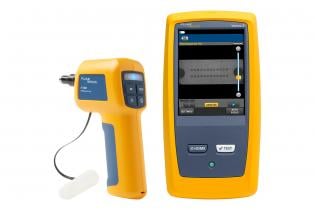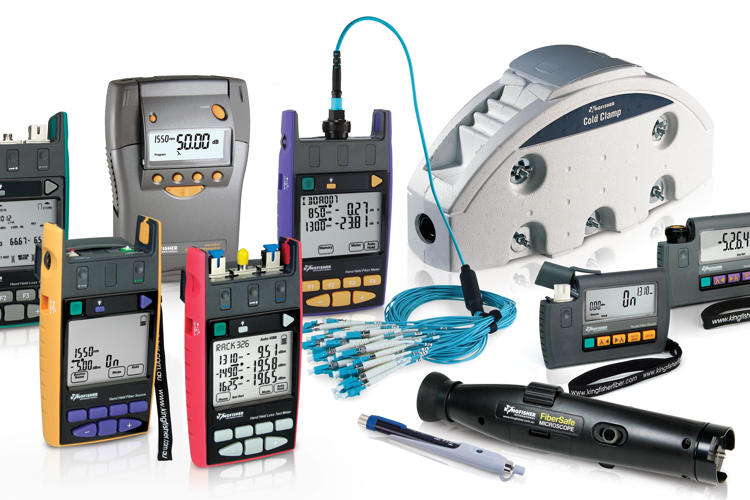7 Signs that you need to upgrade your optical measurement system
7 Signs that you need to upgrade your optical measurement system
Blog Article
Discovering Advanced Techniques in Fiber Measurement and Their Market Influence
In today's fabric sector, exact fiber dimension is crucial for enhancing manufacturing procedures and conference sustainability goals. With the increase of ingenious imaging and logical tools, you can obtain deeper understandings right into fiber framework and composition. This shift not only boosts effectiveness but likewise aligns with sector requirements. As these sophisticated methods develop, you might wonder how they can better change making practices and impact the future of fabrics.
The Relevance of Accurate Fiber Measurement in Textile Production

Cutting-edge Imaging Technologies for Fiber Evaluation
When it pertains to fiber evaluation, ingenious imaging innovations are game changers. High-resolution microscopy techniques and spectroscopic analysis approaches give you with detailed understandings right into fiber framework and structure. These developments not only boost precision but also simplify your dimension processes.
High-Resolution Microscopy Techniques
High-resolution microscopy methods have revolutionized fiber evaluation, enabling researchers to envision fibers at extraordinary degrees of detail. With approaches like scanning electron microscopy (SEM) and transmission electron microscopy (TEM), you can observe fiber morphology, surface area features, and cross-sections with remarkable clarity. These strategies enable you to compare different fiber kinds and examine their structural honesty. You'll discover that high-resolution imaging helps recognize problems, additions, and other important attributes that can affect product efficiency. Additionally, developments in digital imaging software program have improved image handling, making it simpler to assess and translate information. By embracing these innovative methods, you can drive better accuracy in fiber dimension and add to developments in numerous industries, from textiles to compounds.
Spectroscopic Analysis Techniques
Spectroscopic evaluation methods have become effective tools for fiber characterization, supplying understandings that complement high-resolution microscopy. You can use strategies like infrared (IR) spectroscopy, which helps determine the chemical make-up of fibers by measuring molecular vibrations. Raman spectroscopy uses an additional layer of detail, allowing you to examine molecular frameworks through scattering of monochromatic light. These techniques not only boost your understanding of fiber residential properties yet also enable the detection of impurities and structural variations. By incorporating spectroscopic strategies with typical microscopy, you gain an extra extensive view of fibers' physical and chemical qualities, improving your research study precision. Eventually, these technologies can notably impact material option and quality assurance in various sectors.
Advanced Analytical Tools and Their Applications
As you explore the domain name of fiber dimension, you'll uncover that innovative analytical devices play a crucial function in improving accuracy and effectiveness. Techniques like high-performance fluid chromatography (HPLC) and gas chromatography (GC) enable you to examine fiber structure with excellent precision. These tools allow you to identify specific parts and impurities, guaranteeing quality assurance in your products.Additionally, utilizing scanning electron microscopy (SEM) gives you a detailed sight of fiber structure, helping you recognize exactly how different therapies impact performance. Modern software program also simplifies information analysis, making it much easier to interpret complex outcomes and team up across teams.

Effect of Fiber Measurement on Production Efficiency
While accurate fiber dimension may seem like a tiny information, it significantly impacts manufacturing effectiveness in the textile market. When you spend in precise fiber measurement methods, you can optimize basic material usage and minimize waste. This results in much better source allocation, permitting you to generate high-quality textiles without overusing resources.By understanding fiber qualities, you can tailor production processes to details products, boosting your workflow and lowering downtime. Knowing the specific tensile toughness of fibers lets you change machinery settings for optimum efficiency. This not only speeds up production however likewise ensures regular product quality.Moreover, accurate fiber measurement assists you identify concerns early in the assembly line, avoiding expensive reworks and delays (fiber measurement). Overall, executing innovative fiber measurement strategies improves procedures, enhances performance, and eventually boosts productivity. In today's open market, every detail counts, and precise fiber dimension is a game-changer
Sustainability Factors To Consider in Fiber Assessment Techniques
When you examine fiber, it's necessary to contemplate lasting techniques that can minimize ecological impact. Using eco-friendly measurement methods and decreasing waste in your assessments can significantly boost your general sustainability. Furthermore, integrating lifecycle analysis right into your techniques can provide a more clear image of your fiber's ecological impact.
Eco-Friendly Measurement Techniques
Thinking about the expanding need for sustainability in different sectors, embracing eco-friendly measurement methods for fiber analysis has actually become important. You can begin by making use of non-toxic solvents and eco-friendly products in your testing procedures. These choices not only reduce environmental effect however likewise boost safety and security for your group. Implementing electronic measurement methods can better decrease waste, as they typically call for less physical examples and sources. In addition, leveraging ingenious innovations like near-infrared spectroscopy can generate accurate outcomes without harmful chemicals. By choosing these greener techniques, you add to a much more lasting future while maintaining high criteria in fiber high quality. Ultimately, incorporating environment-friendly methods right into your fiber assessment not anchor just aligns with consumer values however additionally increases your brand name's credibility.
Lowering Waste in Evaluation
To effectively lower waste in fiber analysis, you can carry out strategies that simplify your screening processes and lessen source usage. Begin by optimizing example sizes; utilizing smaller sized examples can produce precise outcomes while preserving products. Next off, spend in multifunctional equipment that permits different tests without needing multiple devices, lowering power and source usage. You need to also take into consideration adopting digital devices for data collection and analysis, which can reduce paper waste and boost effectiveness. Frequently training your group on lasting practices ensures every person's on board with waste decrease objectives. Lastly, teaming up with distributors who focus on sustainability can better improve your efforts, permitting you to analyze fibers while keeping a dedication to environmental responsibility.
Lifecycle Evaluation Integration
Integrating lifecycle evaluation (LCA) into fiber evaluation methods can considerably enhance sustainability initiatives. By examining the environmental influences of fibers from manufacturing to disposal, you can recognize locations for renovation. This approach helps you understand view publisher site resource usage, power use, and waste generation throughout the fiber's life.When you integrate LCA, you're not simply determining fiber characteristics; you're also taking into consideration the environmental impact. This all natural sight allows you to make informed decisions that focus on sustainability. You could choose fibers that need less resources or have a reduced carbon influence. Eventually, LCA empowers you to optimize procedures, minimize waste, and advertise eco-friendly selections in fiber production, straightening your methods with worldwide sustainability goals.
Industry Requirements and Rules Shaping Fiber Measurement
As the demand for top notch fiber products expands, comprehending the sector standards and guidelines that control fiber dimension becomes crucial. These standards ensure uniformity, precision, and safety in the measurement procedure, which ultimately affects product high quality. Organizations like ASTM International and ISO stated standards that suppliers need to comply with, covering numerous elements such as fiber recognition, stamina screening, and wetness web content evaluation.

Future Fads in Fiber Measurement and Fabric Production
How will innovations in technology improve fiber measurement and fabric production? You'll see a change toward automation and real-time information evaluation, boosting precision and performance. Smart sensors will keep an eye on fiber properties continuously, permitting for prompt changes in production. This indicates you can anticipate better fabrics with much less waste.Moreover, AI and machine discovering will anticipate trends in consumer preferences, making it possible for suppliers to adapt rapidly. optical measurement system. By integrating blockchain innovation, you'll have far better traceability of products, making certain sustainability and moral sourcing.Virtual fact and augmented fact will contribute as well, providing immersive training experiences for workers on fiber handling and production processes.As you welcome these changes, the textile sector will certainly transform right into a much more receptive, lasting, and ingenious field, setting brand-new requirements for high quality and performance. The future of fiber dimension and fabric production is intense, and it's time here are the findings to jump on board
Regularly Asked Concerns
What Are one of the most Typical Fiber Types Measured in the Industry?
In the sector, you'll often come across natural fibers like cotton and woollen, in addition to synthetic alternatives such as polyester and nylon. Each kind has unique residential or commercial properties, affecting their measurement and application in different items.
Just How Do Fiber Dimensions Influence Customer Product High Quality?
Fiber measurements straight influence consumer item top quality by making certain uniformity, durability, and efficiency. When you recognize these metrics, you can make educated selections, resulting in boosted fulfillment and far better general experiences with the products you utilize.
What Training Is Needed for Fiber Measurement Technicians?
To end up being a fiber dimension technician, you'll need specific training in textile science, dimension techniques, and equipment operation. Hands-on experience and certifications can enhance your abilities, making you competent in precise fiber evaluation and quality assurance.
Are There Any Accreditations for Fiber Dimension Professionals?
Yes, there are qualifications for fiber measurement experts. You can seek alternatives like the Qualified Fiber Optics Service Technician (CFOT) or numerous industry-specific qualifications that improve your know-how and reputation in fiber dimension and testing.
How Can Little Businesses Carry Out Fiber Dimension Techniques Effectively?
You can implement fiber measurement methods efficiently by buying cost effective tools, training your team, and establishing clear procedures. Team up with market specialists and continuously refine your processes to enhance accuracy and efficiency in time.
Report this page